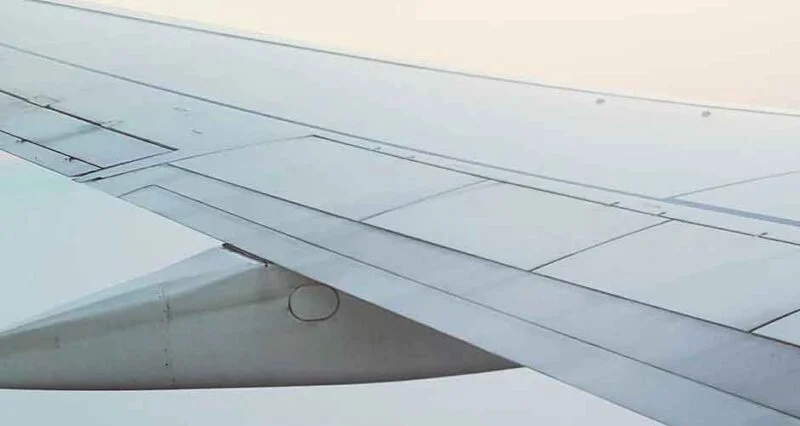
Have you ever been in awe of an airplane’s elegant glide while gazing up at the sky? It is a marvel of physics and engineering that makes it possible for tons of metal to fly through the air with ease. A thorough understanding of flying power is necessary to comprehend how airplanes accomplish this feat. Below is your extensive manual to demystify the mechanics of how aircraft remain airborne.
1. Lift and Thrust: The Dynamics of Flight
The basic concepts of lift and thrust are the foundation of aircraft mechanics. Lift is the force that propels an airplane into the air and overcomes gravity. It is produced by the aerodynamic design of the wings as air passes over and beneath them. On the other hand, thrust from the engines moves the aircraft through the air and provides the required forward velocity. Lift and thrust cooperate to maintain the aircraft in the air and traveling forward.
Many factors, including airspeed, wing design, and engine efficiency, influence the amount of lift and thrust produced during flight. These parameters ultimately determine the performance and maneuverability of the aircraft. Because it is the basis of flight mechanics and the development of aviation technology, pilots and engineers alike must comprehend the dynamic interplay between lift and thrust.
2. Weight and Drag: Balancing Forces in Flight
The opposing forces of weight and drag oppose the upward force of lift and the forward propulsion of thrust. Weight, the airplane’s gravitational force, pulls it down toward the surface of the Earth. To attain and maintain flight, the lift produced by the wings must efficiently surpass the weight of the aircraft, supplying the requisite upward force. On the other hand, drag is the opposition an aircraft faces when flying through the atmosphere.
The aircraft’s form and air friction are two elements that affect this resistance. Because drag lowers the amount of energy needed to drive the aircraft forward through the air, minimizing drag is essential for maintaining effective flight operations and preserving fuel. For safe and effective flight, it is necessary to strike a careful balance between these conflicting forces, enabling aircraft to fly economically and precisely.
3. Control Surfaces: Steering Through the Skies
Aircraft use control surfaces to steer and maneuver through the air in addition to lift and propulsion. The ailerons, elevators, and rudders these essential components provide pilots with precise control over the roll, pitch, and yaw movements of the aircraft.
The trailing edge of the wings has ailerons, which move upward or downward in opposite directions to regulate the roll of the aircraft. Elevators modify the angle of the horizontal tail surface to control the pitch of the aircraft; they are usually mounted on the horizontal stabilizer. In the meantime, the vertical stabilizer’s rudders control the plane’s yaw motion by deflecting left or right. A smooth and controlled flight experience for both passengers and crew is ensured by pilots who expertly manipulate these control surfaces to maintain stability, execute turns, and navigate through the skies.
4. Power Systems: Energizing Flight Operations
An aircraft’s power system is a complex web of interconnected systems that work together to provide a steady flow of energy during flight. Every part is essential, from sophisticated electrical power distribution networks that power crucial components like avionics and lights to fuel management systems that optimize use and maintain balance.
The Concorde battery is particularly notable among them due to its unmatched dependability, which makes it an essential backup power source in case of emergency. Its sturdy construction prioritizes utility and safety while guaranteeing the ongoing operation of critical systems. A cleaner future for air travel is also being promised by the development of aircraft power systems, which is opening the way for increased sustainability and efficiency in aviation through the integration of cutting-edge technology like fuel cells and electric propulsion systems.
5. Maintenance and Safety: Upholding Aviation Standards
In aviation, it is crucial to guarantee the dependability and safety of an aircraft’s flight power systems. Routine maintenance procedures, such as careful inspections, servicing, and rigorous adherence to manufacturer requirements, are essential to this attempt. By ensuring that every part performs at its best, these preventative steps help lower the possibility of any failures occurring while the aircraft is in flight.
In addition, pilots receive extensive training to enable them to effectively manage a variety of flight situations and crises, supporting aviation safety procedures. Aviation experts maintain the highest levels of safety and dependability by placing a strong priority on careful maintenance and ongoing training. This creates a safe atmosphere that keeps both passengers and crew members safe during their travels.
Conclusion
Understanding the principles of flight power is essential to comprehending how aircraft maintain altitude. Every element, from weight and drag to lift and propulsion, is essential to making flight possible. The aviation sector maintains the highest standards of efficiency and safety in air travel by using dependable parts and prioritizing maintenance and safety procedures.

